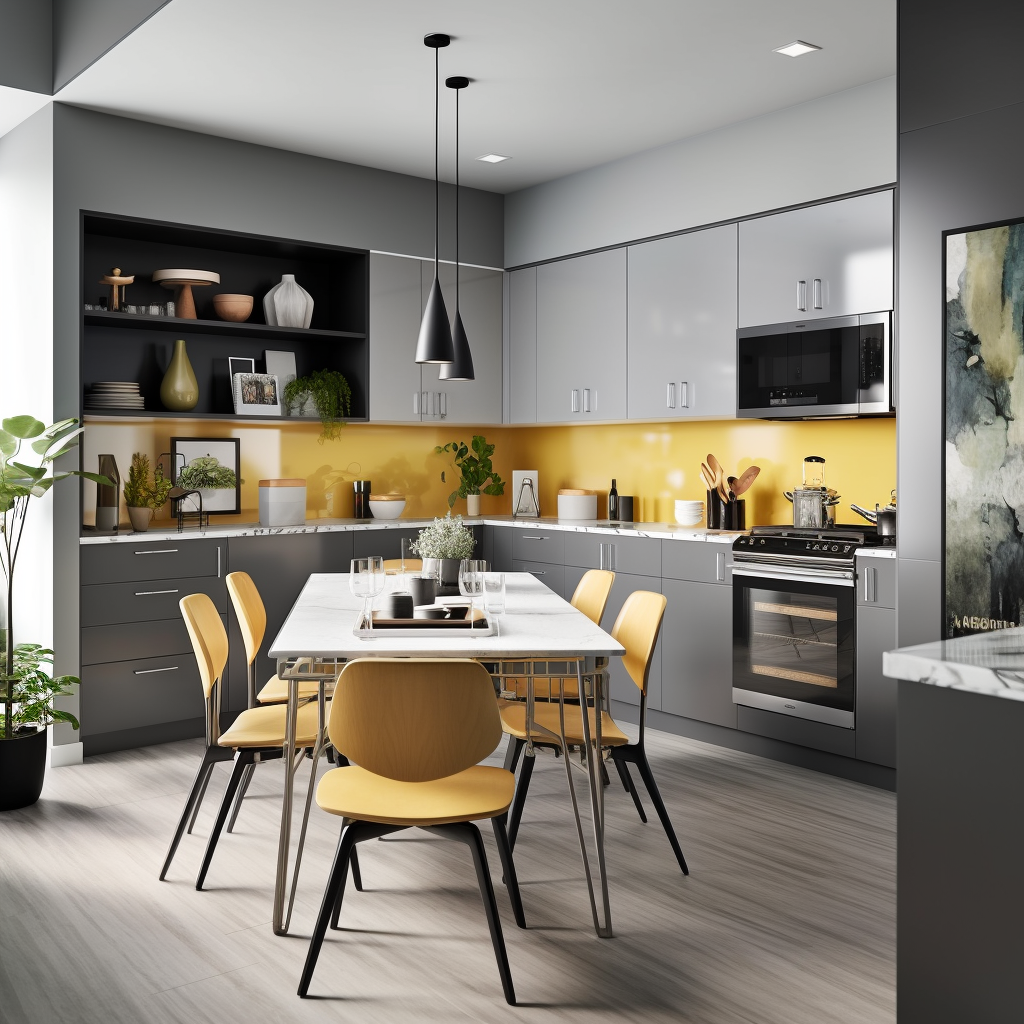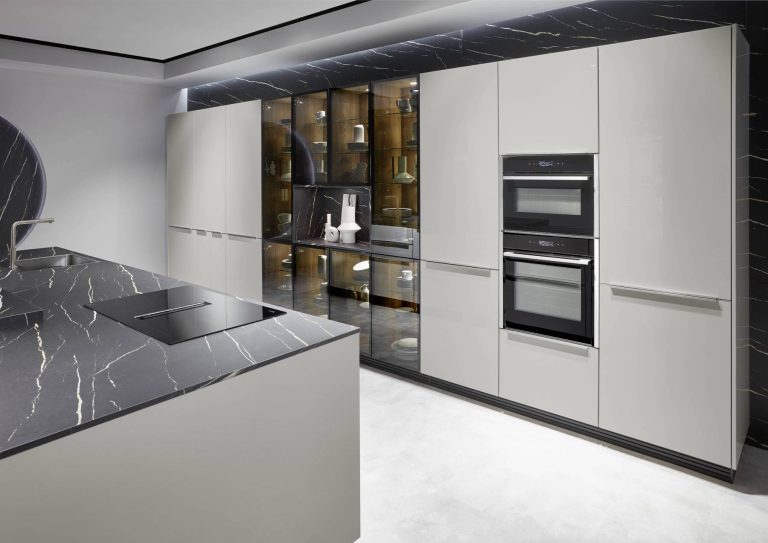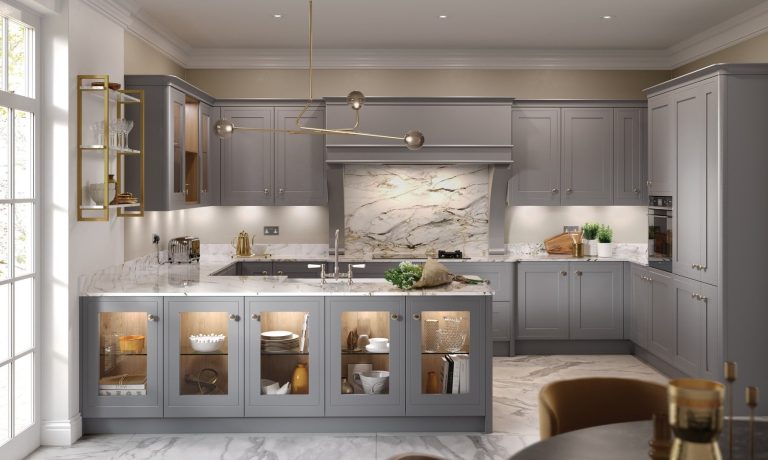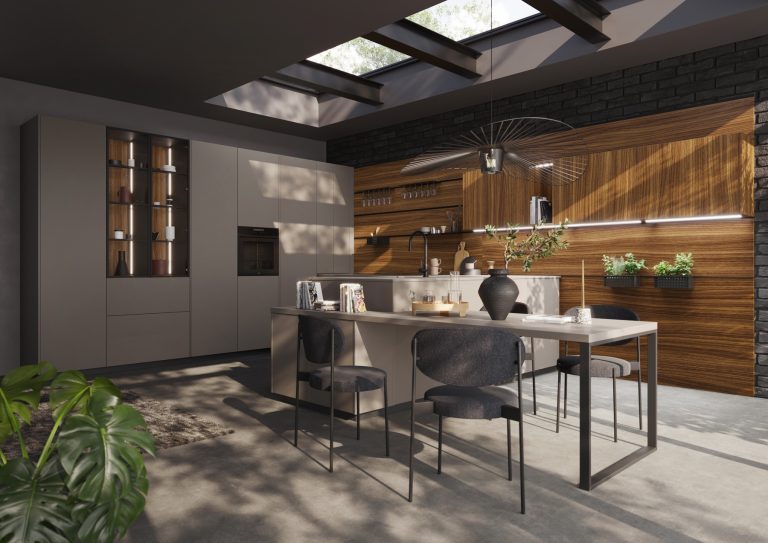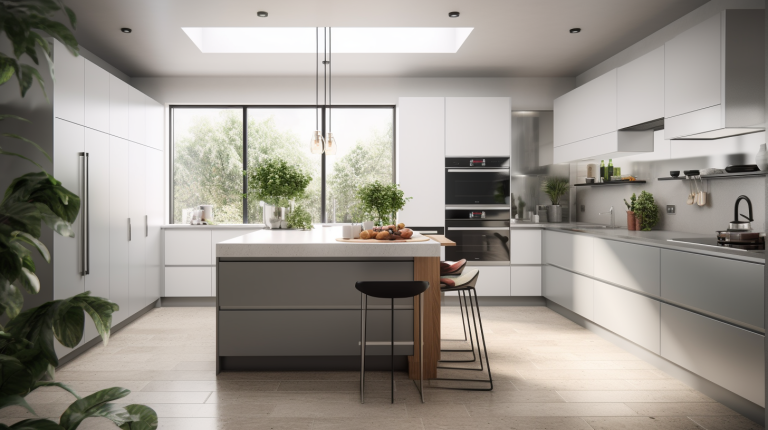Grey Kitchen Ideas
Grey Kitchen Ideas
Grey kitchens have become increasingly popular in recent years, as homeowners and designers alike have embraced the versatility, sophistication, and timelessness of this neutral hue. Grey, often considered a calming and neutral colour, offers a unique opportunity to create a space that is both stylish and functional.
With a wide range of shades and undertones, from cool to warm, light to dark, grey is a suitable choice for a variety of kitchen styles, whether traditional, modern, or somewhere in between. Moreover, as a neutral colour, grey provides a solid foundation for incorporating other colours and design elements, ultimately creating a highly personalised and visually appealing space.
When designing a grey kitchen, there are numerous considerations to keep in mind, such as selecting the perfect shade of grey, choosing coordinating cabinetry and countertops, and incorporating grey flooring and backsplashes. Additionally, attention must be given to the choice of appliances and fixtures, as well as the incorporation of pops of colour and personal touches to bring the space to life.
This article aims to explore these various aspects of grey kitchen design, providing a comprehensive guide for those seeking to create a stunning and functional grey kitchen space that is both on-trend and timeless.
Choosing the Perfect Shade of Grey

Selecting the ideal hue of this versatile colour is crucial for achieving a harmonious and stylish cooking space. The plethora of grey shades available in the market can be overwhelming, making it essential to consider factors such as the size of the kitchen, the amount of natural light, and the overall design theme.
Furthermore, the undertones in grey paints can range from cool to warm, with each providing a distinct ambiance. Cool undertones, such as blue or green, can render a serene and modern look, while warm undertones, such as beige or brown, can evoke a cozy and inviting atmosphere. To ensure a cohesive appearance, it is advisable to coordinate the chosen grey shade with the colour of countertops, cabinets, and other elements in the kitchen.
The process of selecting the perfect grey shade may commence with the creation of a mood board, which can facilitate the visualisation of the desired outcome. Incorporating paint swatches, samples of countertops, and images of kitchen designs can provide a comprehensive view of the colour scheme and the impact of the chosen grey hue.
Additionally, consulting with a professional designer or colour consultant can offer valuable insights and recommendations tailored to individual preferences and requirements. Experimenting with various shades by painting a small section of the wall or using peel-and-stick paint samples can also be beneficial in making an informed decision.
Ultimately, the choice of grey should not only enhance the aesthetic appeal of the kitchen but also reflect the personality and lifestyle of the occupants.
Selecting Grey Cabinetry and Countertops
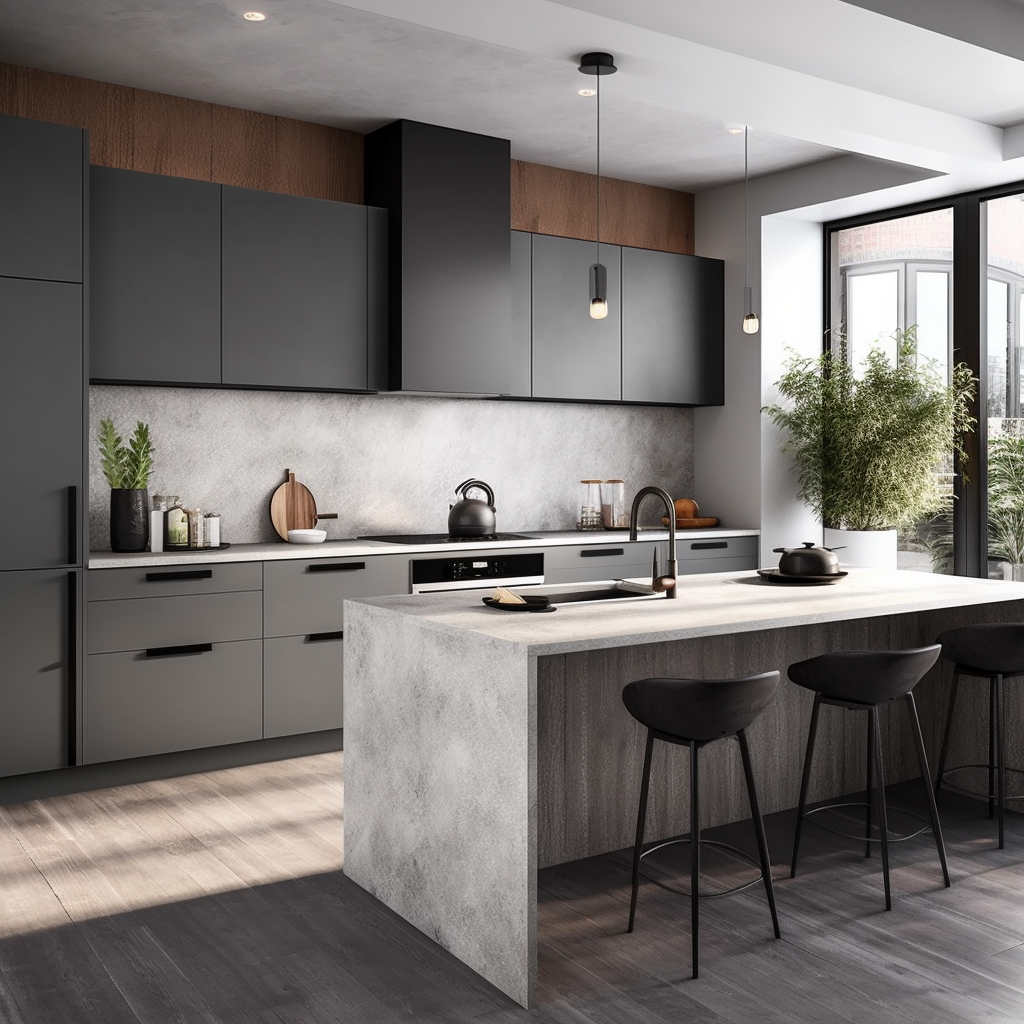
Evaluating various shades and patterns of cabinetry and countertops proves crucial in crafting a harmonious, yet striking, culinary space that exudes both elegance and serenity.
When selecting grey cabinetry, consider factors such as the undertones of the grey, the desired atmosphere, and the overall kitchen design. Light grey cabinets with cool undertones work well in creating a contemporary and airy ambiance, while dark grey cabinets with warm undertones lend a more traditional and cozy feel to the space. Additionally, the finish of the cabinets, whether matte or glossy, can impact the overall aesthetic. Matte finishes offer a more understated and sophisticated appearance, while glossy finishes can add a touch of glamour and reflect light, making the space appear larger.
When it comes to countertops, grey offers a wide range of options, from solid shades to intricate patterns. Solid grey countertops provide a sleek and modern look, while patterned options, such as those with veining or speckled designs, add visual interest and can help mask everyday wear and tear.
Material choice also plays a significant role in the final appearance of the countertops. Popular options include natural stones like granite and marble, as well as engineered materials like quartz. Each material has its unique characteristics, with natural stones offering a timeless and luxurious appeal, while quartz provides durability and a consistent appearance.
Pairing grey cabinetry with complementary or contrasting countertop colors can result in a beautifully balanced and visually engaging kitchen design.
Coordinating Appliances and Fixtures

Incorporating well-coordinated appliances and fixtures into the culinary space further enhances the overall aesthetic, creating a harmonious and visually appealing environment.
When selecting appliances for a grey kitchen, one can opt for stainless steel or graphite finishes, as they complement the grey tones of cabinetry and countertops. Additionally, the choice of fixtures, such as faucets, cabinet handles, and lighting, should be carefully considered to ensure they blend seamlessly with the overall design theme. Brushed nickel, chrome, and matte black are popular choices for grey kitchens, offering a modern and sophisticated appearance while providing a subtle contrast to the cabinetry.
The choice of lighting in a grey kitchen is crucial in setting the desired ambiance and mood. Recessed lighting can be used to provide general illumination, while pendant lights and under-cabinet lighting can accentuate specific areas or features in the space. The integration of LED lighting strips beneath the toe-kick of cabinets or around the kitchen island can add a touch of flair and enhance the overall design.
Moreover, selecting energy-efficient appliances and fixtures not only complements the grey kitchen design but also promotes sustainable living and reduces energy consumption.
By carefully coordinating appliances and fixtures in a grey kitchen, a cohesive and visually striking design can be achieved, resulting in a functional and stylish space.
Adding Pops of Color and Personal Touches
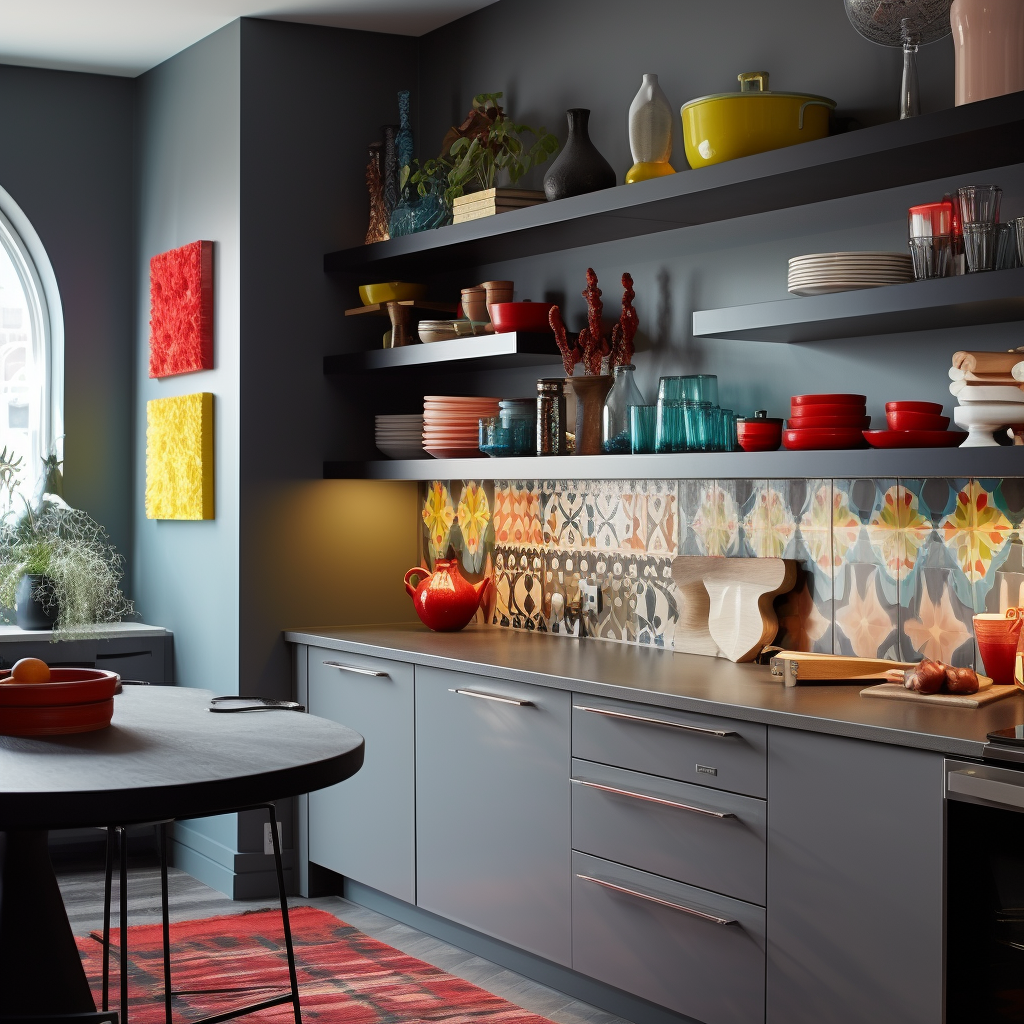
Introducing vibrant accents and individualised elements to the culinary space can effectively elevate the aesthetic appeal and create a more dynamic atmosphere. This approach allows homeowners to personalise their grey kitchen, transforming it into a unique and inviting environment.
Incorporating colourful accessories, such as vibrant dishware, statement light fixtures, or bold textiles, can help to break up the monotony of a monochromatic palette and draw the eye to different areas within the space. Additionally, integrating artwork or decorative items that showcase the homeowner’s personal tastes and interests can contribute to the overall character of the room, making it feel more like a reflection of the individual rather than a sterile, uninviting space.
When adding pops of colour and personal touches to a grey kitchen, it is important to maintain a sense of balance and harmony within the space. This can be achieved by selecting accent colours that complement the existing grey tones, such as warm metallics like gold or copper, or contrasting hues like bold blues or rich greens.
By incorporating these accent colours strategically throughout the space, homeowners can create a cohesive and visually appealing design. Furthermore, it is essential to consider the overall layout and functionality of the kitchen when introducing personal elements, ensuring that these additions do not impede the flow of the space or detract from its primary purpose as a functional cooking and dining area.
With careful planning and attention to detail, homeowners can successfully incorporate colour and personal touches into their grey kitchen, creating a unique and inviting environment that reflects their individual style and preferences.
Incorporating Grey Flooring and Backsplashes
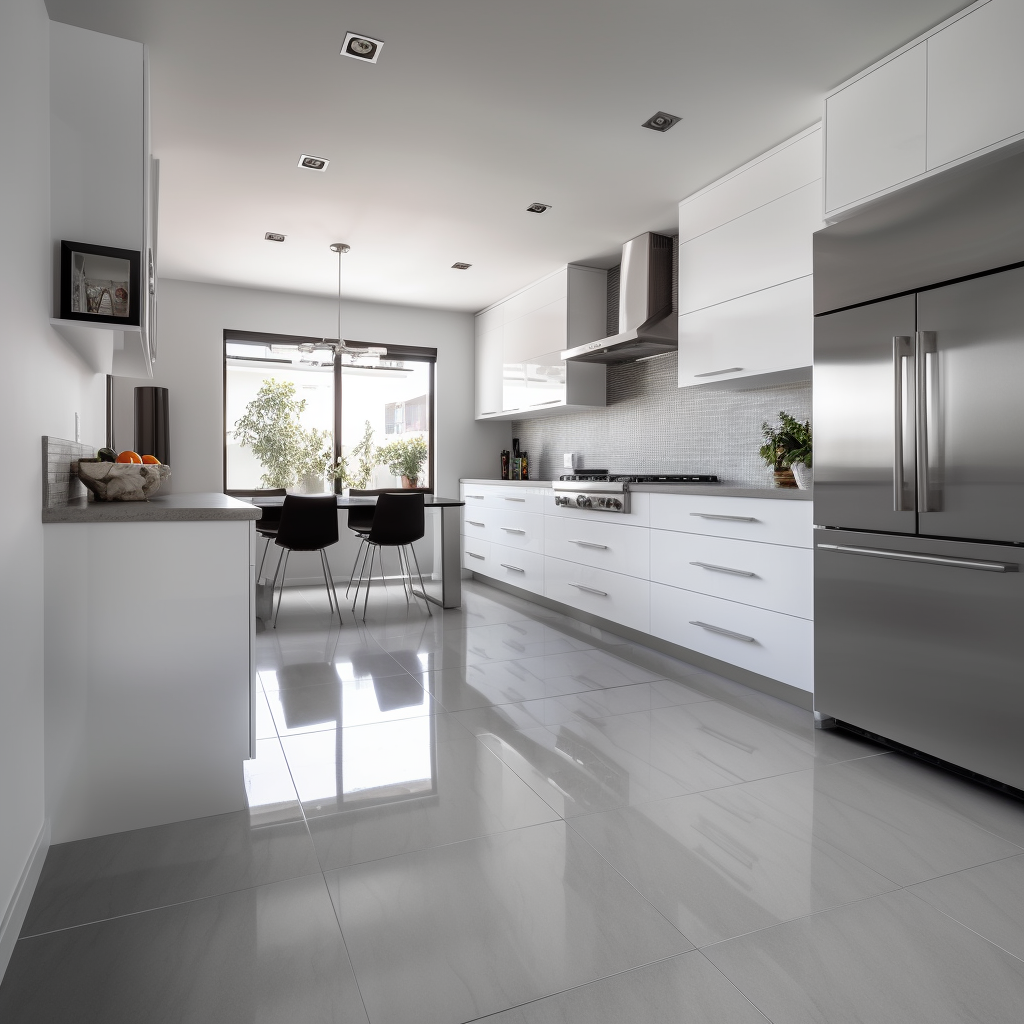
Delving into the realm of flooring and backsplashes offers a myriad of opportunities to further enhance and harmonise the overall design of a monochromatic culinary space.
Grey flooring options, such as porcelain tiles, laminate, or hardwood, can provide a durable and elegant foundation for the kitchen while setting the tone for the entire room.
Similarly, grey backsplashes can be used as a subtle backdrop for countertops and cabinetry or as a bold statement piece, depending on the materials and patterns used.
The selection of the right combination of grey flooring and backsplash designs can create a visually cohesive and inviting atmosphere.
1. Porcelain tiles: Available in various shades of grey and a range of finishes from matte to high gloss, porcelain tiles are versatile and highly durable. They can be used to create intricate patterns on the floor or backsplash, adding depth and interest to the overall design.
2. Laminate and hardwood: Grey laminate or hardwood flooring can provide a warm and inviting foundation for a kitchen, while still maintaining a sleek and modern appearance. Laminate is a budget-friendly option, while hardwood offers the benefit of longevity and natural beauty.
3. Backsplash materials: Grey backsplash options can range from classic subway tiles to unique geometric patterns or even natural stone. The choice of material will depend on the desired level of visual impact and the overall design aesthetic of the kitchen. For instance, a grey marble backsplash can create a sense of luxury and sophistication, while a patterned ceramic tile may add a playful and contemporary touch to the space.
Conclusion
In conclusion, grey kitchens offer a versatile and sophisticated canvas for homeowners seeking a balanced and timeless design. By carefully selecting the appropriate shade of grey, along with coordinating cabinetry, countertops, appliances, and fixtures, one can create a cohesive and visually appealing space.
Furthermore, integrating grey flooring and backsplashes can enhance the overall aesthetic, while pops of colour and personal touches add vibrancy and character.
Ultimately, the success of a grey kitchen design lies in the meticulous attention to detail and harmonisation of various elements. With thoughtful planning and execution, homeowners can achieve a stylish, functional, and enduring kitchen that reflects their personal tastes and preferences.
The versatility of grey ensures that it will remain an enduring choice for kitchen design, capable of adapting to a wide range of styles and trends.
